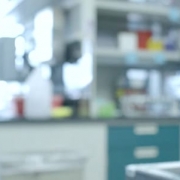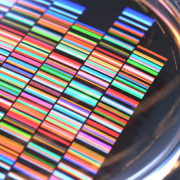The dark side of the genome – does it matter?
Scientists believe that just 2% of our DNA is responsible for encoding proteins. But what of the rest – can it really just be ‘junk’?
The mysterious area dubbed ‘the dark side of the genome’ – previously termed ‘junk DNA’ – is a hotly contested issue. The human genome contains over 20,000 genes – DNA sequences that encode proteins – but we now know that these vital regions of DNA equate to less than 2% of the total. The remainder has regularly been dismissed as useless, merely ‘junk’. However, scientists continue to ask why, in such a complex and carefully honed machine as the human organism, would there be so much waste?
Debate over non-coding DNA
The ENCODE project aims to identify all the functional elements in the human genome – besides the genes. Whilst no role has been identified for most non-coding DNA, functions for some regions have been uncovered. Many direct the production of RNA molecules with important cellular actions, including protecting the structure of DNA and preventing it from unravelling, and regulating gene activity in various ways.
Research into non-coding DNA continues, but periodically arguments flare in response to new evidence or reasoning. In 2012, ENCODE declared that as much as 80% of our DNA shows some degree of activity and could have a purpose. This message was reiterated this year by Francis Collins of the US National Institute for Health Research, who proclaimed that most junk DNA actually “turns out to be doing stuff”.
To others, however, it makes evolutionary sense that a high proportion of the genome would have no function. DNA is light and unobtrusive, and it may be more efficient for an organism to effectively shove redundant sections in a corner and forget about them than to actively dispose of them. As recently argued in the New York Times, if all (or most) DNA had a function in the development of an organism, serious birth defects would probably be far more common; since the average baby is born with a hundred new genetic mutations, humans would have become extinct within a century. As the article mentions, the ‘onion test’ also gives credence to the argument that much of our DNA is without function. The genome of an onion is five times the size of the human genome, yet an onion is not a more complex organism.
Evolutionists claim that genomic ‘dark matter’ is now pretty well understood; most of it is either highly repetitive, or so degraded by mutation as to be rendered inactive.
Are there gems among the junk?
A middle ground seems to be emerging, with many scientists coming round to the idea that there are functional pockets hidden among the genomic junk. Far below the 80% proportion that some scientists have claimed, others believe that around 8% of the dark matter previously believed to be junk is indeed useful.
Some very recent studies have revealed new insights in specific areas of disease. For example, the discovery that one in five tumours associated with the most common type of adult leukaemia develop from mutations in junk DNA; or that four pieces of RNA that appear to have important roles in the control of cholesterol have been retrieved from the dark side. Of course, these newly identified areas of importance still add up to a mere fraction of the whole genome, but if they can help us learn more about the big health issues of the day, surely the dark side is worth exploring.
–









